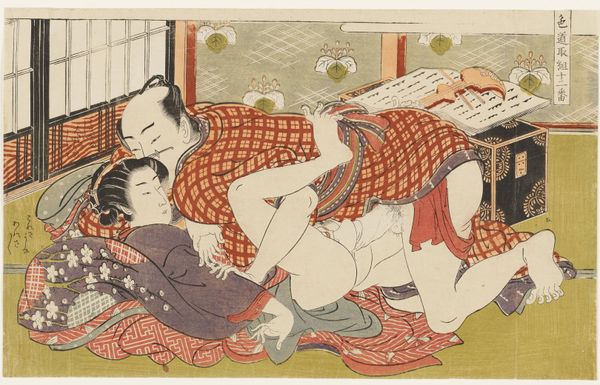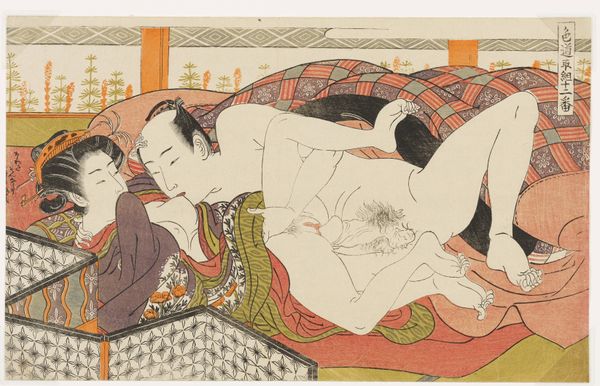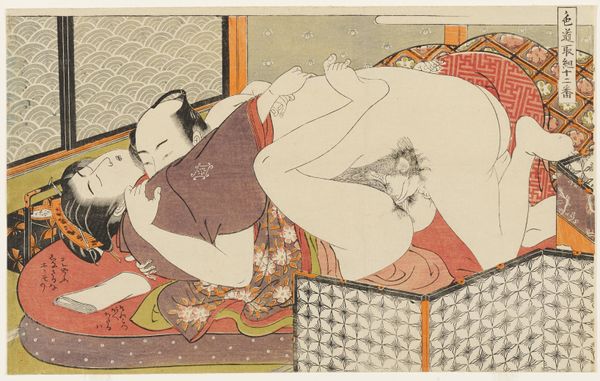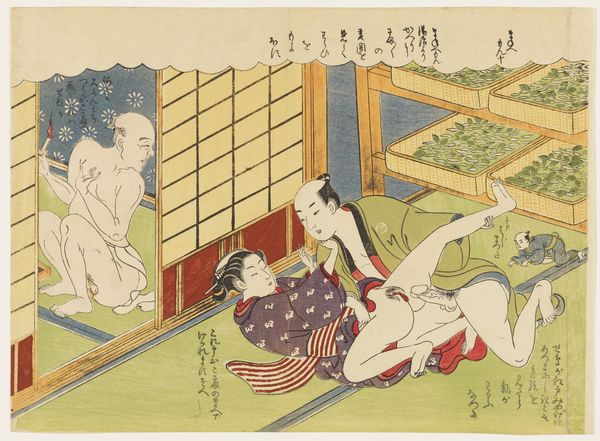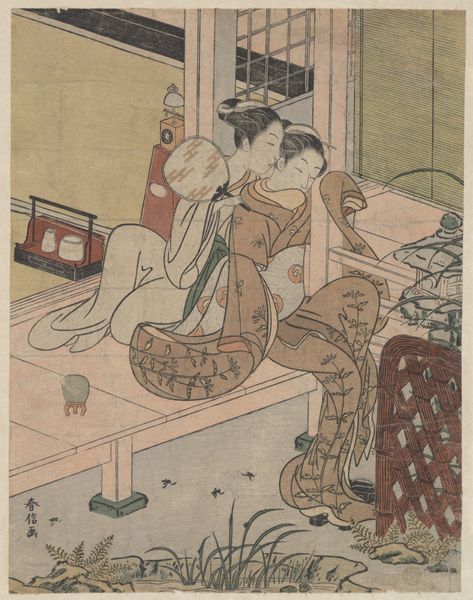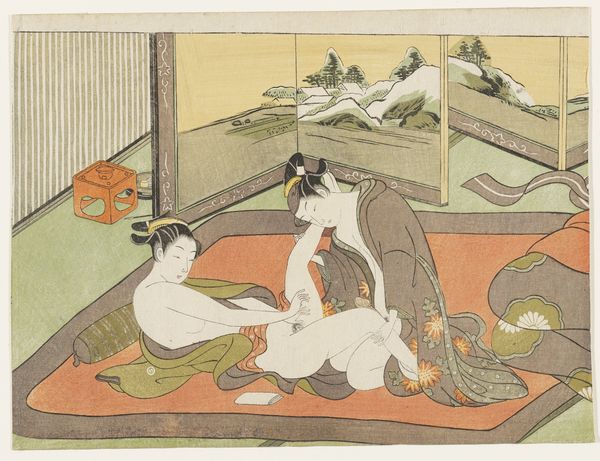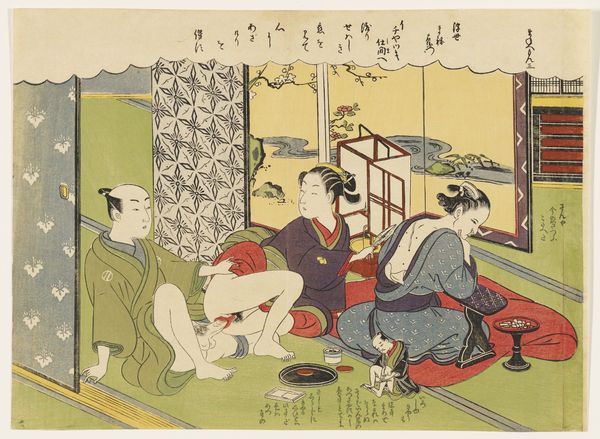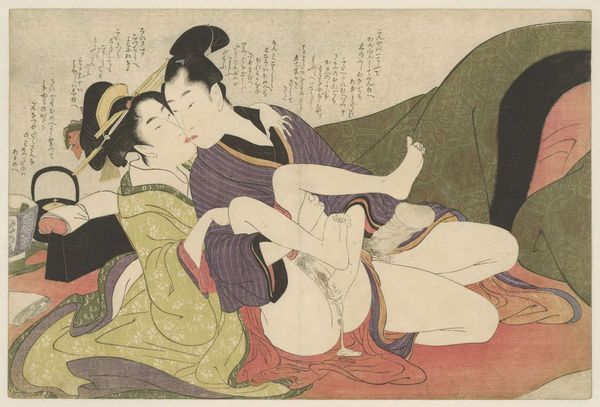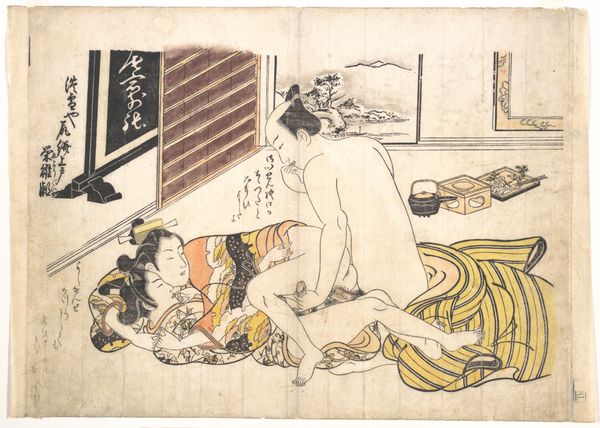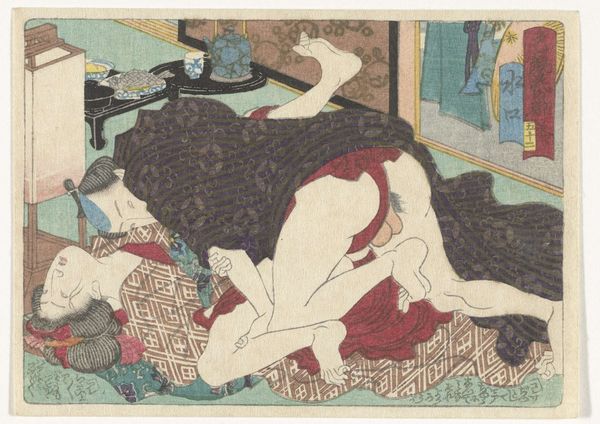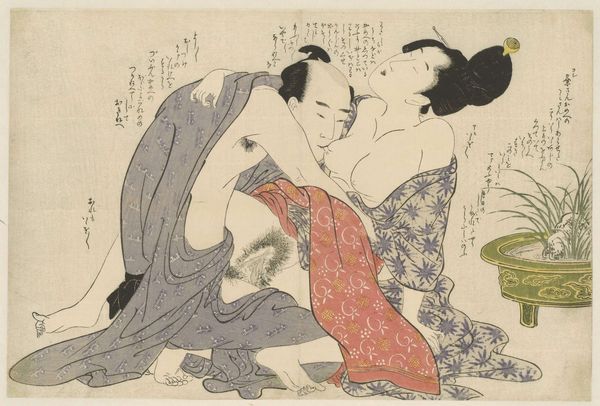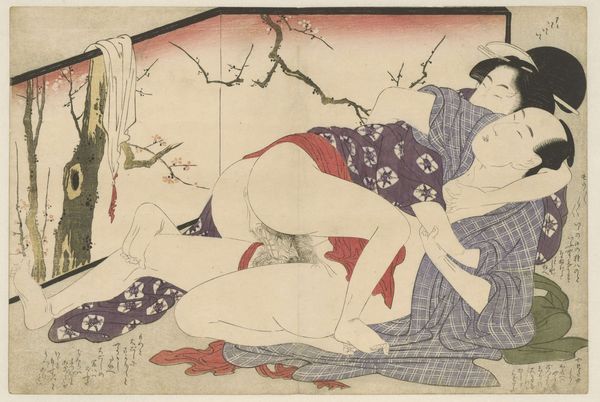
print, ink
# print
#
ukiyo-e
#
japan
#
ink
#
orientalism
#
genre-painting
#
nude
#
erotic-art
Dimensions: 9 1/4 × 14 13/16 in. (23.5 × 37.62 cm) (sheet, horizontal ōban)
Copyright: Public Domain
Curator: Immediately striking, isn't it? It's got a dreamlike quality…the lovers seem almost afloat. Editor: Indeed, this striking ukiyo-e print, titled "Before the Mirror," was created around 1775-1777 by Isoda Koryūsai. It's currently held at the Minneapolis Institute of Art, a delicate rendering executed in ink and color on paper. Curator: Floating in layers of silk and skin! There's something incredibly tender and sensual about the entwined bodies, the subtle blush of the skin, the gentle curves… And a mirror in the upper corner showing a tranquil pastoral landscape seems an absurd juxtaposition. What do you make of the landscape that's almost being dismissed from the pictorial field? Editor: Its exclusion feels almost rebellious, if not deeply intentional. One could argue that in erotic art, especially within the historical context of Japan, representing love transcends societal and often rigidly constructed norms. Koryūsai is challenging prevailing orthodoxies by pushing the boundaries of desire and sensuality. The choice of ukiyo-e – the "floating world" – suggests something ephemeral and perhaps, deliberately defiant of long-held aesthetic conventions. Curator: Defiant but delicate. I'm curious about the details we almost overlook at first glance… the intricate patterns on the robes, like tiny universes… or how about the details on the mirror? What would our subject think if we looked at it as a tool that shows who she is, the one that holds her face as her gaze moves down into it, when here her attention appears fixed elsewhere? The details speak to an intimate awareness, a story whispered on paper… Editor: Yes, and whispering too is the underlying themes of objectification within the historical orientalist perspective. This lens positions Eastern cultures, and in this instance, particularly women, as exoticized objects of male gaze. It's necessary for us to critically examine power dynamics, question representation, and consider intersectional experiences when engaging with works like this. Curator: Even the "floating world" can become a place for both freedom and confinement, it seems. The complexity of these issues always excites me. Editor: And leaves one so much to reflect on regarding whose gaze and what the politics of representation mean across the ages. It’s precisely those questions which continue to stir dialogue and enrich our understanding of art.
Comments
minneapolisinstituteofart about 2 years ago
⋮
A woman covers her face with her kimono sleeves her lover looks over his shoulder to see their reflection in a mirror for added narcissistic stimulation. As is the case in most ukiyo-e prints or paintings utilizing a mirror, the reflection depicted would be impossible from that position.
Join the conversation
Join millions of artists and users on Artera today and experience the ultimate creative platform.

